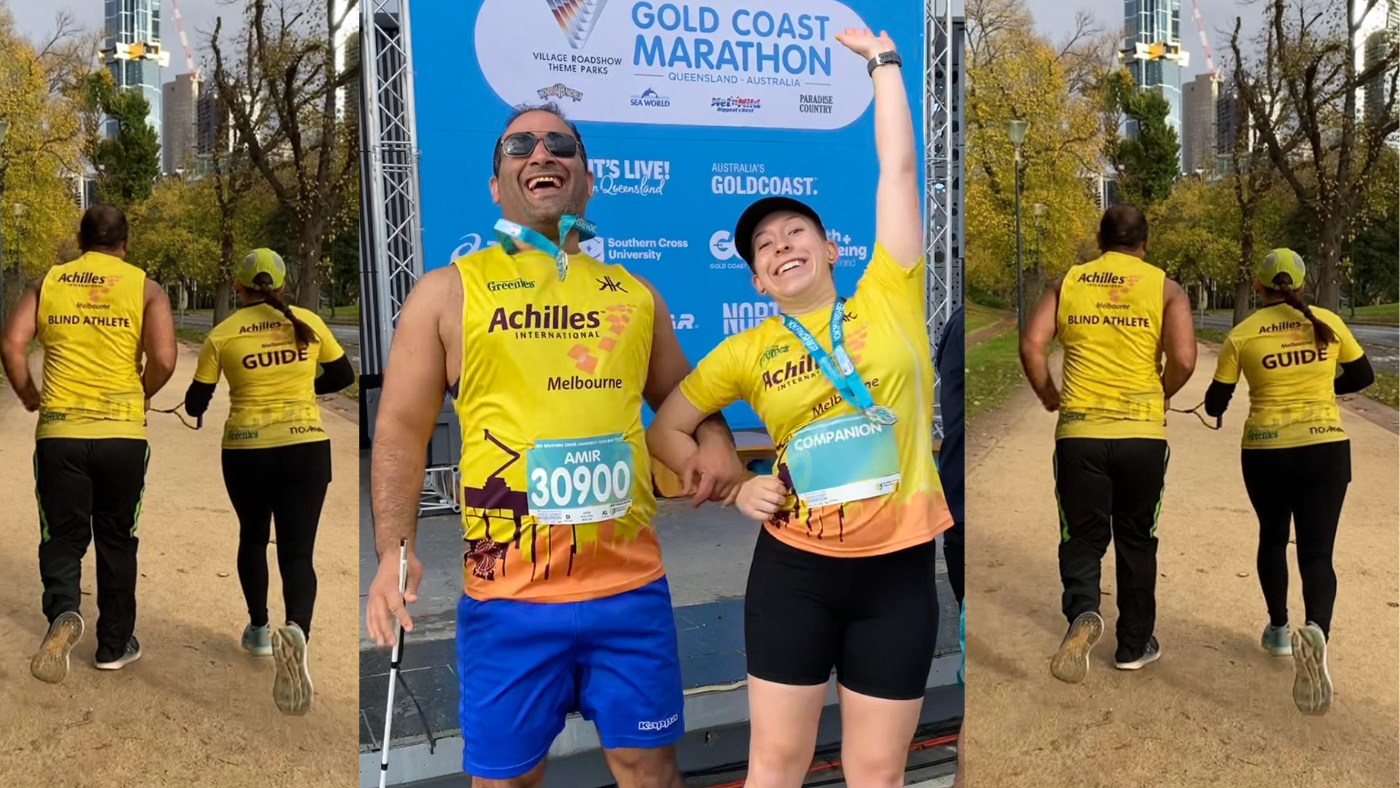Meet Zoe Azzopardi – FOHER Co Ambassador, triathlete, student, lifeguard and passionate advocate for inclusive sports. We asked Zoe to share her very inspiring journey from her very first parkrun experience to guiding vision impaired runners, and her passionate involvement with Achilles Melbourne. Zoe shares heartfelt insights on the importance of accessibility, the impact of small actions, and how you can help make sports inclusive for everyone. Join Zoe in breaking barriers and creating an athletic world where everyone belongs. I hope you enjoy reading about Zoe's important contributions to our sport, and perhaps you will be inspired to guide as well.
x Kylie and the FOHER Team
--------------------------------------------------
Hi, I’m Zoe Azzopardi – a triathlete, student, lifeguard, musician, sister, daughter, but perhaps most importantly, I’m human – (probably) just like you! We can do anything we want to do, be whatever we want to be, but for some, realising this can be quite difficult. Especially when living with a disability.
I’m not going to tell you whether or not I live with a disability. They can be seen, invisible, undiagnosed; you can never assume if someone has a disability based on the way they look, walk or talk. Even still, the same disabilities can look different among different people.

Pic: Zoe was a recipient of FOHER Co Pro Triathlete Penny Slaters SEND IT Scholarship in 2023.
When I was 15, mum dragged me along to parkrun on a frosty morning. She told me she was doing ‘guide training’. I didn’t exactly know what was involved but I was keen to check out what the fuss was all about. I remember walking to the park with mum and seeing a sea of yellow tops and fluoro vests, worn by experienced guides, vision impaired and blind runners and walkers. Perhaps daunting at first, I was given the opportunity to guide a vision impaired runner, as well as being blindfolded myself and have a somewhat similar experience running blind. Guiding can be a scary thought at first as these athletes are essentially using your vision as their own, and I learned that to be a good guide doesn’t necessarily mean accidents don’t happen – they do! I forgot my lefts and rights on my first day and ran a vision impaired athlete into a tree, oops!

Pic: Zoe and blind athlete Amir running up Anderson St with big smiles and waves during the 5km race at Run Melbourne in 2023.
The group where I did my training and continue to guide with is called Achilles Melbourne, a run club that supports blind and vision impaired athletes. Achilles can also be found right around Australia and the world, supporting all athletes with disabilities. I remember at the training session, the guide trainer that day said, ‘we don’t guide because we’re looking for credit, we don’t guide for bragging rights, we guide because everyone deserves to have the opportunity to run.’ This really stuck with me and is probably part of the reason I am so passionate about inclusive sport now. While guide training, accessible sporting facilities and understanding of disabilities isn’t found everywhere, people with disabilities CAN be found anywhere.

Pic: Zoe and vision impaired Achilles runner Brooke at the 2XU Wellness Run in 2022.
Unfortunately, guide training isn’t accessible everywhere, but perhaps most people probably don’t even realise that all it takes to learn is to ask someone in need. Their lived experience (or lack of) is often the best way to teach a newbie as long as you’re willing to listen.

Pic: Zoe and blind runner Izzy after interschool cross country (Girls Sport Victoria) at Yarra Bend in 2024.
Post on your local Facebook group asking if there is anyone with a disability keen to try out your sport or needing a hand to get started. Head to parkrun and make some connections. Even kids at a close by school or sporting club may be looking for you, a person who is willing to help them be their eyes, their sound, their legs or arms.

Pic: Zoe and Amir after Gold Coast Marathon 10km in 2022.
I’m lucky living in Melbourne where, even though there is nowhere near enough representation for disability in sport, there is access to different sporting clubs and volunteers who are always welcoming new people or trying their best to spread the word. Others aren’t so lucky and feel isolated, particularly in regional areas where disability is almost a foreign word. A willingness to open your mind and hear their stories is the first step. Perhaps guiding isn’t for you or being someone’s aide isn’t your calling. That is okay. What’s not okay is that too many people sit back and take their bodies for granted and remain ignorant to the fact there are people who feel as though they cannot be included in our sport.

Pic: Zoe guiding Amir around the Tan track in Melbourne.
Step one: share the story.
Step two: get involved.
Step three: smile, because maybe you’ve helped one person realise they do belong in our sport, in this world.
Zoe.
If you would like to learn more about guiding people with disabilities, please visit the Achilles Australia website:
https://www.achillesaustralia.org.au/guiding-tips.html

Pic: (from left to right) Zoe, vision impaired athlete Claudia and Zoe’s mum Julie holding their medals up from the stands in the MCG after running the 10km at the Melbourne Marathon in 2023.


1 comment
What a wonderful and hugely supportive organisation to belong to. I had never heard of Archilles prior to reading this story. Sadly my running days are long gone but I love to hear of the good things that are happening in our world that are usually behind the scenes, but so enabling for our athletes to get out there and ‘have a go’. Thank you for sharing Zoe.